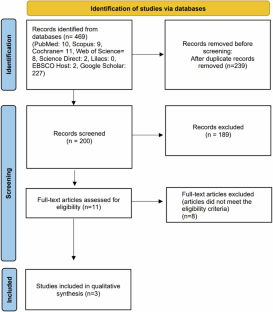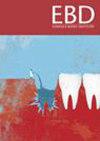Plaque cleaning efficacy of waist-shaped interdental brushes among individuals with open interproximal spaces: a systematic review
Q3 Dentistry
引用次数: 0
Abstract
The shape and design of interdental brushes are crucial for appropriate adaptation to the interproximal areas, despite their excellent cleaning efficacy. The aim of this review is to assess and compare the available data on the plaque cleaning efficacy of waist-shaped interdental brushes with any other shaped-interdental brushes among patients with wide interdental spaces. Scopus, PubMed, Cochrane, Science Direct, EBSCO Host, Lilacs, Science Direct, Web of Science, and Google Scholar were searched from the earliest available year (2011) till May 15, 2024. PICO Strategy: P: Individuals with open interproximal spaces; I: Waist-shaped interdental brushes; C: Any other shaped interdental brushes; O: Interproximal plaque cleaning efficacy. The review only comprised randomized controlled trials. The risk of bias assessment and quality of evidence was assessed using the RoB-2 Tool and GRADE Tool respectively. Three full-text publications that met the requirements for eligibility underwent additional processing for data extraction. The overall results of the review suggest that the plaque cleaning efficacy of waist-shaped interdental brushes is better than straight/cylindrical-shaped interdental brushes in patients with open interdental spaces; especially on the buccal and lingual line angles. However, the pooling of data was not possible due to the high heterogeneity between the studies. The current review suggests that the plaque cleaning efficacy of waist-shaped interdental brushes could be better than straight or cylindrical shaped-interdental brushes in patients with open interproximal spaces, especially in buccal and lingual line angles. However, further research should focus on appropriate methodological techniques to increase overall reporting quality and limit the possibility of bias.


腰形牙间刷对牙龈间隙开放者的牙菌斑清洁效果:系统性综述。
背景:尽管牙间刷具有极佳的清洁效果,但其形状和设计对于适当适应牙间隙区域至关重要。本综述旨在评估和比较腰形牙间刷与其他任何形状的牙间刷在牙间隙较宽的患者中的牙菌斑清洁效果:方法:对 Scopus、PubMed、Cochrane、Science Direct、EBSCO Host、Lilacs、Science Direct、Web of Science 和 Google Scholar 进行了检索,检索时间从最早可获得的年份(2011 年)至 2024 年 5 月 15 日。PICO 策略:P: 牙间隙开放的个体;I:腰形牙间刷;C:任何其他形状的牙间刷;O:牙间隙牙菌斑清洁效果。综述仅包括随机对照试验。采用 RoB-2 工具和 GRADE 工具分别评估了偏倚风险和证据质量:三篇符合资格要求的全文出版物经过了额外的数据提取处理。综述的总体结果表明,在牙间隙开放的患者中,腰形牙间刷的牙菌斑清洁效果优于直形/圆柱形牙间刷;尤其是在颊舌线角度上。然而,由于各研究之间存在高度异质性,因此无法对数据进行汇总:目前的综述表明,在牙间隙开放的患者中,腰形牙间刷的牙菌斑清洁效果可能优于直形或圆柱形牙间刷,尤其是在颊舌线角度。不过,进一步的研究应侧重于适当的方法技术,以提高总体报告质量并限制偏倚的可能性。
本文章由计算机程序翻译,如有差异,请以英文原文为准。
求助全文
约1分钟内获得全文
求助全文
来源期刊

Evidence-based dentistry
Dentistry-Dentistry (all)
CiteScore
2.50
自引率
0.00%
发文量
77
期刊介绍:
Evidence-Based Dentistry delivers the best available evidence on the latest developments in oral health. We evaluate the evidence and provide guidance concerning the value of the author''s conclusions. We keep dentistry up to date with new approaches, exploring a wide range of the latest developments through an accessible expert commentary. Original papers and relevant publications are condensed into digestible summaries, drawing attention to the current methods and findings. We are a central resource for the most cutting edge and relevant issues concerning the evidence-based approach in dentistry today. Evidence-Based Dentistry is published by Springer Nature on behalf of the British Dental Association.
 求助内容:
求助内容: 应助结果提醒方式:
应助结果提醒方式:


